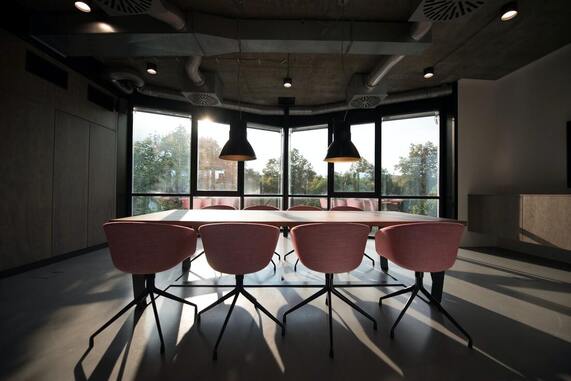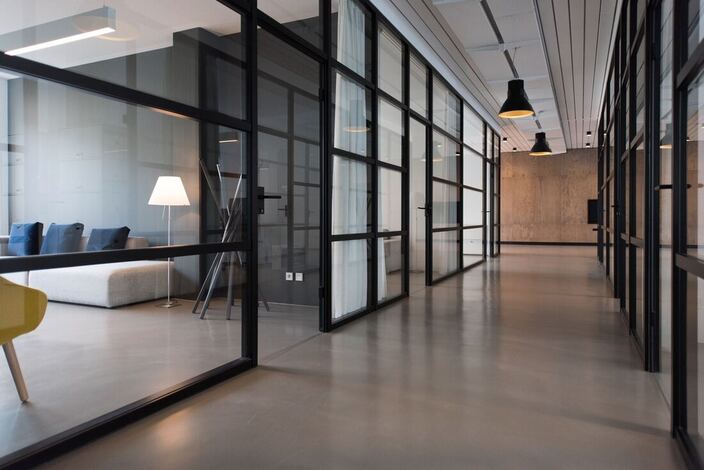|
The last two years has seen an incredible shift in the way we work. In response to the pandemic, lockdowns and office closures forced companies to quickly adopt a Working From Home (WFH) model. 18 months into the pandemic, this model has not only proven to be effective, it has revealed some surprising benefits, and has become an entrenched behaviour in workplaces throughout the world. As a permanent and full time model however, WFH cannot be solely relied upon.
We have seen enough to give us an idea of what 2022 will look like for workplaces. As we approach our vaccination targets, we can hope for fewer lockdowns and a return to the office. But what will that office look like upon our return? An increase in flexible workspaces hasn’t led to the death of the CBD office as predicted.
However, offices that were traditionally used 5 days a week are now being re-considered as part time spaces that serve a different purpose. As they return to the office, employees are no longer looking for just a desk and a boardroom. They need a space that will re-enforce the social connections pivotal to daily work. Furthermore, the office’s role in brand positioning is vital as many companies attempt to bounce back after a year at home. This fresh take on the office space, while exciting from a workplace point of view, will have significant implications for occupancy rates, as commercial tenants begin to re-assess their property strategies. Renowned architects and urban designers Maud Cassaignau and Markus Jung likened Cremorne to the industrial areas of London and New York: “What struck us was the diversity of typologies…People seemingly didn’t know it so well. We felt that here was something really precious”
This tiny inner pocket of Melbourne, sits quietly behind the Monash Freeway. Once a manufacturing precinct, it’s working class character still remains, with the original signs and factories a beautiful reminder of days gone by. Melburnians love the suburbs that pay homage to our past, but Cremorne has recently emerged as something more… . This year has seen many companies return to a flexible working model, where individual workers and teams split their time between a physical working environment and a virtual one. This new working landscape has presented a challenge for culture, as companies question the role played by the physical office space in maintaining it.
Historically, cultural “rituals” that were once enacted in the office, can no longer take place or if they can, they face disruption through a new hybrid working model, where employees are not in attendance full time. From this new framework, a need to redefine culture has emerged, with many companies forced to rebuild their cultural practices and values to retain talent and integrate new employees. This week we sit down with BRM designer Jacqui Greenberg, who talks about returning to the office and what that means for design moving forward.
On January 18, 2021 Victoria began a staged return to the office with most workplaces in the private sector set to return to 50% capacity. By the beginning of March, offices were expected to be mostly full, with new measures put in place to make workers feel safe and supported. The media reported a steady rise in foot traffic in the CBD as companies were interviewed about their staff’s excitement over a return to in-person meetings.
In reality, things look a little different. In fact, the big return to the office has not exactly met expectations, particularly among landlords and business leaders. Click here For most commercial tenants approaching the end of their lease, a “Stay Vs Go” decision will be faced. Many important factors go into this decision and in 2020/2021, there will be even more to consider. COVID has led to a sudden and rapid change in the workplace landscape. There are new behaviours among tenants and their workers – some which will outlive the health crisis and influence “Stay vs Go” decisions for years to come. In addition, the need for most businesses to cut occupancy costs has led them to re-visit their property strategy. Landlords have responded to these changes quickly, adopting new flexibilities in their lease terms in order to hang on to good quality tenants and a steady income from their assets.
Almost every industry has been turned on its head in 2020. In particular, client-facing industries have needed to adapt their services rapidly without knowing the outcome. Our collective shift into remote work has seen some businesses adapt to the change, but it hasn’t all been positive. Technology cannot be solely relied upon when it comes to touch, feel, and physical human connection. In our industry, no more is this absence of physical communication felt than in the area of design. BRM’s design team has historically placed people and connection at the heart of every project. So how will decisions ultimately be made? Will the loss of physical involvement in the design process (both ours and our clients’) be detrimental to the outcome? Back in March, as we packed up our colour schemes and moved our design programs into our living rooms, we prepared to face some daunting challenges. This is how we’ve approached them….  Transitions in the working landscape have occurred throughout history but they usually happen over the course of many years. The pandemic of 2020 has forced businesses across the world to transform their entire workplace models within only a few months. Most workplaces have adapted to these changes well and recognise that the future of work will look different.
How the ‘hub and spoke’ approach will change the way we think about commercial real estate.26/8/2020
The moratorium may have been extended to the end of December, but businesses still need to plan for the future direction of their workplace. Workplaces will never be the same. People’s expectations have changed in terms of what they want and need from an office and this will significantly impact future property decisions.
The “Hub and Spoke” is an approach that we have helped clients implement as they face growth, downsizing or other major changes within their organisation. When executed correctly, the Hub and Spoke method can improve business’s bottom line while boosting productivity, performance and wellbeing among staff. |
Sign Up To Our NewsletterArchives
September 2023
Categories
All
|
BRM |
QUICK LINKS
|

 RSS Feed
RSS Feed








